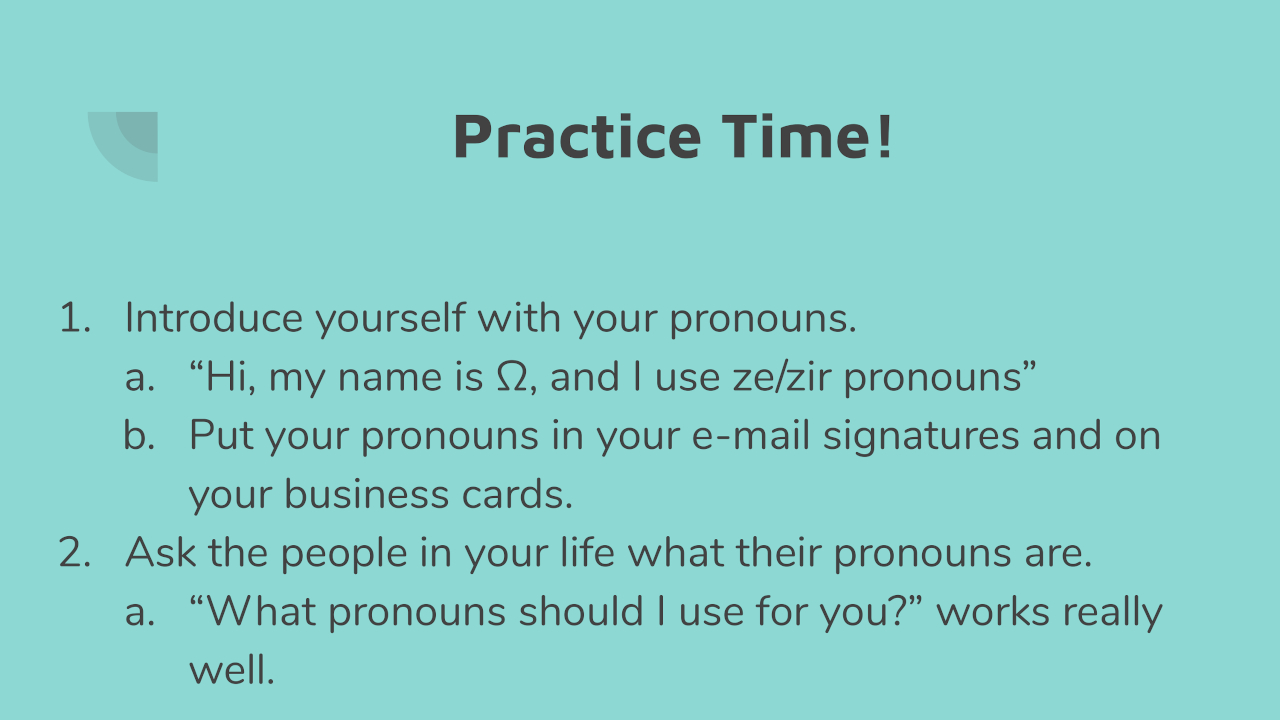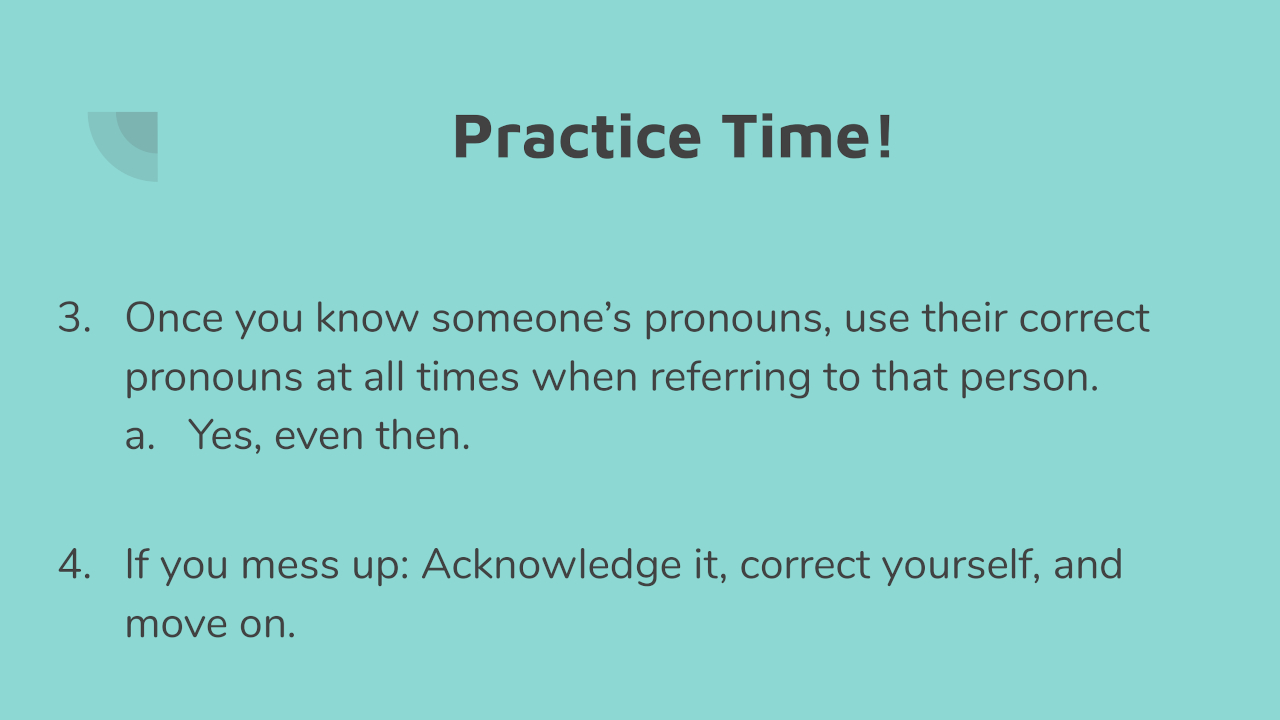So, if you are interested in getting more familiar and comfortable with using people's pronouns, we recommend this short exercise that you can start practicing now.


The Pronoun Practice Party method is best done in groups, but you can also do it solo, and explain what you're doing to others, so that they can also start their own Pronoun Practice Party.
- First, when introducing yourself to others, use your pronouns in addition to your name.
- "Hi, my name is Ω, and I use ze/zir pronouns" is a perfectly cromulent way of doing it. Do this even if you don't use neopronouns, because the point is to normalize the idea that people can share their pronouns without terrible consequences happening to them.
- Once you're comfortable introducing yourself with your pronouns, start putting your pronouns on your business cards, e-mail signatures, name badges, and other places where people are likely to interact with you. Again, do this even if you don't use neopronouns, because the goal here is to normalize the behavior and make it something that "people" do, not something "those people" do.
- The other part of the Pronoun Practice Party is asking other people what their pronouns are, and getting comfortable doing so if the other person doesn't have something where they are sharing their pronouns for you.
- "What pronouns should I use for you?" is a good way of constructing the question, as "What are your pronouns?" might get back "I don't know." or other similar answers if the person you're asking hasn't made a decision yet about what pronouns they want to use, or if they don't tell people their correct pronouns until they have passed a trust check, or they're not out in their work life. By asking what pronouns you should use, the other person doesn't have to justify themselves to you in any way, but instead can answer your question with whatever the correct answer is at the time you ask.
- Regardless of what answer you get when you ask what someone's pronouns are, regardless of whether that's the same answer they gave you the last time you asked, when you get the answer to what pronouns to use, use the correct pronouns for someone in the appropriate situation when you are referring to that person. Respect any conditions that someone has put on the use of their pronouns. They probably have good reasons to not want to be out at work, or with their family, or in other situations where they might suffer harm from use of their correct pronouns. (The slide here says "all situations," which would be the ideal. If you phrased the question correctly, you should be able to use what answer you got back in all situations, even if it means that in some situations, you use a different set of pronouns than you would use more generally.
- You are going to mess up. This is inevitable, and for most situations, embarrassment will be the strongest consequence of messing it up. When you mess up, acknowledge the mistake, correct yourself by using the proper pronouns, and then continue on. There's a phenomenon where people who profess to be allies make a bigger deal of their mistake, demanding that the people they've just slighted comfort them and reassure them that it's okay to make mistakes, which both saps energy from the people who should be apologized to and centers the discussion away from the important part of using someone's pronouns correctly. Apologize, correct yourself, continue on.
That's the secret to it, which doesn't seem like a whole lot at all. The benefits of correctly using someone's pronouns correctly and normalizing the use of corrrect pronouns are significant. Someone leaving you a nice note about how nice it was for you to use their correct pronouns the first time and without prompting is the base level of nice things that can happen, and it only gets better from there.
It's time to practice!